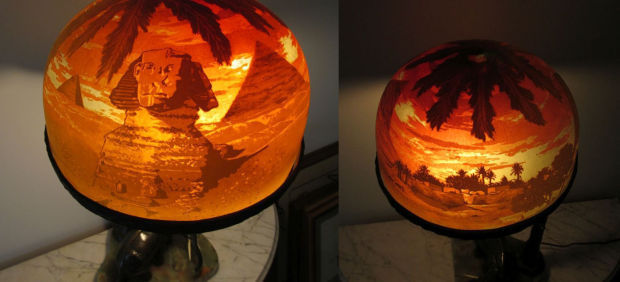Q: My dad was a manager with IBM and managed its pavilion at the 1963-64 World’s Fair in Flushing, N.Y. At the end of the exhibit, he brought home this picture from the People Wall exhibit. Any value?
A: Our reader adds that after the fair, each manager was allowed to take something he wanted to keep. From an image sent, we see that her father took an illustration panel.
The attractive color printed art shows a framed mock newspaper with the headline “Computer Day at Midvale!”
Many collectors go for World’s Fair memorabilia. Some are more significant collectingwise, and most buyers zero on a favored fair. The 1893 World’s Columbian Exposition in Chicago and the 1962 Seattle fair stand out.
Chicago-area collector Rick Rann has collected WF memorabilia for more than 20 years; his specialty is the 1933-34 Century of Progress fair in Chicago. His annual show featuring WF collectibles will be in March 2015. See www.worldsfairshow.com.
Rann told us the IBM pavilion at the 1963-1964 fair is especially important to collectors of Modernism because it was designed by giants of design, Charles Eames and his wife, Ray. Housed behind IBM’s “egg” building designed by Eero Saarinen, the pavilion was signature Eames from tented kiosks with mechanical puppet shows to furniture and decorative design by Ray Eames.
I invite our reader to visit the blog http://esotericsurvey.blogspot.com/2013/05/1964-worlds-fair-kiosk-ibm-eames.html to learn about that IBM pavilion. She will even see a shot of her exact panel! According to Rann, it’s the “Now Playing” picture that appeared overhead above the puppet show.
We have no info on size, but typically the panels were about 3 by 4 feet.
Original and significant Eames design has a near cultlike following today. It’s primarily the association with Eames that gives the graphic immense potential.
But it gets better: Because the panel touts IBM’s first electronic calculator, unveiled at the fair, fans of early scientific instruments will be interested. Add WF collectors and that makes for a lot of potential demand.
When Los Angeles Modern Auctions sold an intact kiosk (minus furnishings) from the pavilion in June 2006, it brought $72,000. A Charles and Ray Eames “Computer Day at Midvale” panel somewhat similar to the reader’s sold for $4,200. There were three puppet shows: Each probably had a differing Midvale panel. A Sherlock Holmes painted aluminum sliding cover for the puppet show brought $7,200.
Placed in a high-profile Modernism auction, this panel might bring four figures or more. It needs to sell at auction for maximum exposure, and from a house that will market it properly. When and if you get ready to sell, shop it judiciously.
Knowing all that, our reader may want to move her panel from potential moisture. Just a suggestion.





